Fairy Tales & Fables Part 1: Little Red Riding Hood, The Three Billy Goats Gruff, & The Three Little Pigs
There are so many reasons for parents to read fairy tales and fables to young
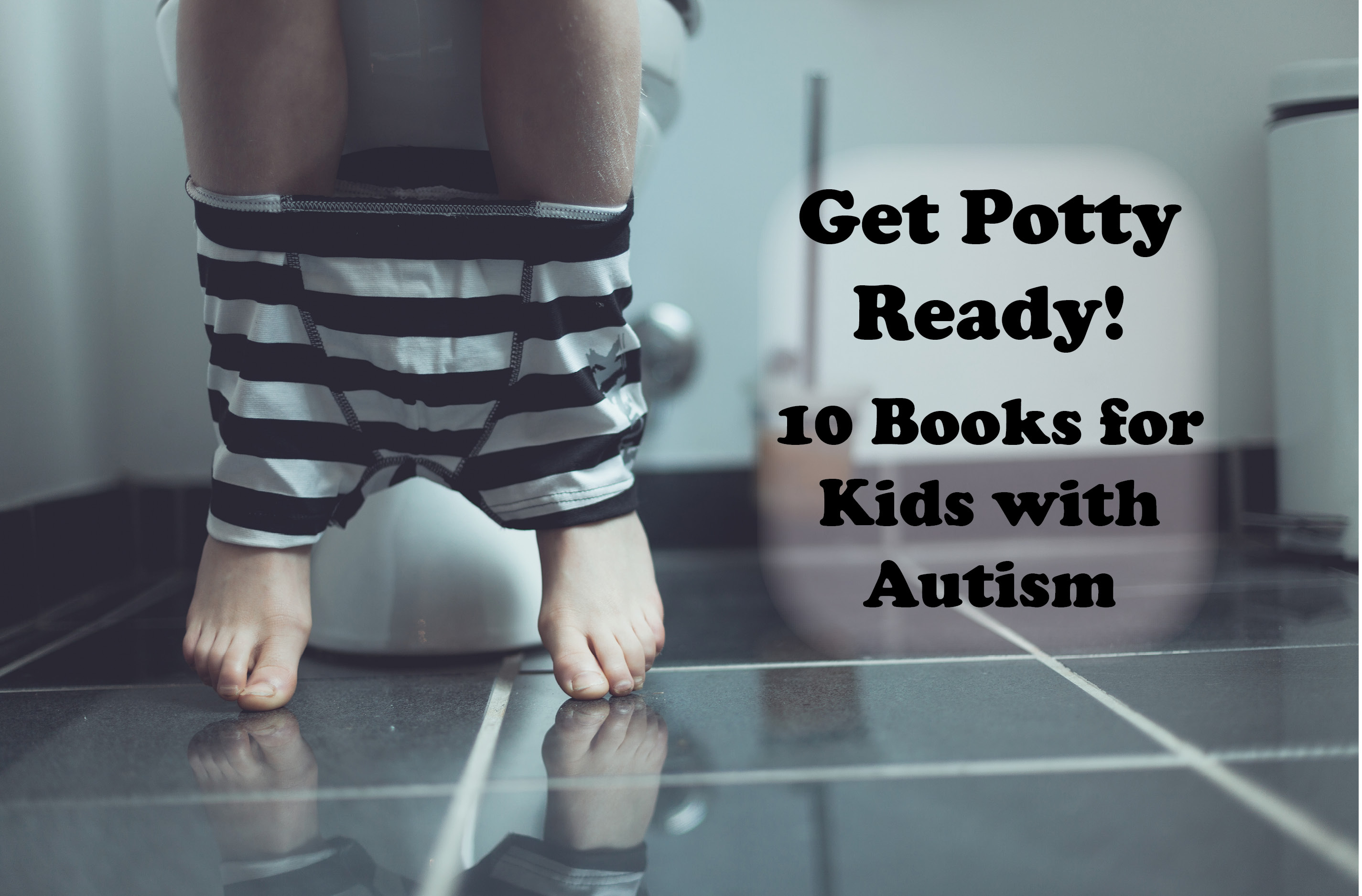
Once upon a time, I thought I'd be able to potty train my two-year-old twin boys in three days, just like the internet promised I could.
I was in denial about my situation: Kids with autism do not usually learn to use the bathroom "on time." It's not at all unusual for children with autism to be five, six, or older and still be in diapers. I know a few pre-teens with more significant developmental delays who use diapers. As they say, it's a spectrum.
My son Harry made the switch to underwear last year just before he turned four. His twin Luke took another full year, but accomplished this feat just a few months shy of his fifth birthday, after nearly two years of more or less consistent potty training. We were lucky. We had individualized support from autism professionals for both of our sons; without these supports I know it would have taken much longer still.
The best advice is what I received from other special needs parents: Try not to worry about it. But being potty trained is such a socially sensitive milestone, and I did worry about it.
Parents of kids with ASD watch slack-jawed as our children's typically developing peers breeze through this stage. And our (non-special needs) parent friends and family just don't get it and manage to say and do crappy things, even with the best of intentions. Schools, after-school programs, and recreational programs start to turn our kids away because of no-diapers policies. Medicaid and private insurance bureaucratically blocks our attempts to access the few brands of pricey diapers for larger children. Meanwhile, we are potty training; or if we are not, we are desperately working on a prerequisite skills checklist (hopefully with the assistance of an autism therapist).
I scrutinized those potty training readiness checklists for something I could do on my own—and without professional training. Physiological readiness is out of anyone's hands, and I'm unqualified to take the lead on motor planning or behavioral plans. But language seemed like something I could help with. I resolved to expose my kids to the social language and vocabulary of pottying as much as humanly possible.
I narrated my actions when I used the bathroom (and yes, I left the door open). I also made calculated decisions about how to use screen time, encouraging Sesame Street's Elmo's Potty Time and PBS Kids' Daniel Tiger: Daniel Goes to the Potty whenever possible.
Of course, I also sought out great picture books. I looked for titles that use the words and show the images for body parts, bodily functions, urine and feces, and the parts of the bathroom, as well as books that told relevant social stories.
I quickly became frustrated with how children's publishing shies away from the real words for some body parts (PENIS. It's called a PENIS). And I was sad about all the books that made ableist—and potentially self-esteem-damaging—assumptions about the universality of child development.
Fortunately, there are books I can enthusiastically recommend. Here are ten of my kids' favorites.
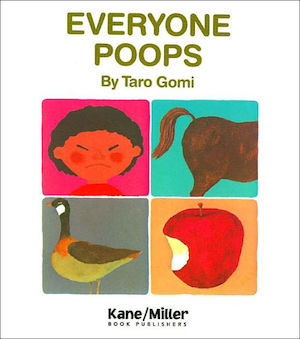
Kane/Miller Book Publishers (1993); paperback, $7.99

An elephant makes a big poop. A mouse makes a tiny poop. And there the turds are: gigantic and teeny-tiny, in all their glory, right next to their respective animals.
With this iconic opening, Taro Gomi introduces a variety of animals and a variety of poop, and a variety of pooping habits (including ours). Simple cartoon drawings and large sans serif black type perfectly stand out against a warm range of solid backgrounds.
In the end, the connection between eating and pooping is established: "All living things eat, so" // "Everyone Poops" and the final spread shows a line up of animals (and one human child) actively pooping.
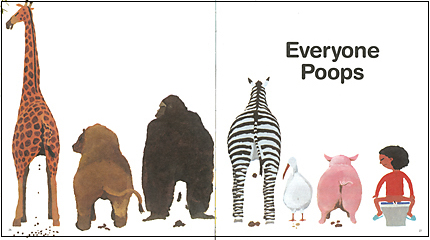
Lots of humorless people find this book gross. But kids love it. Besides, find me any other decent picture book where you can actually tact poop coming out of a human's butt and say, "The boy is pooping." GOLD.
Everyone Poops is a well-known classic for a reason.
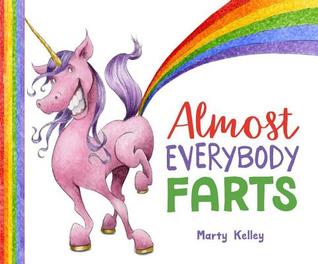
Sterling Children's Books (2017); hardcover, $12.95

I reviewed Almost Everybody Farts earlier this year in a round-up of new releases, but I'd be remiss if I left it off this list. This book is rhyming, rhythmic silliness at its best. We learn synonyms and euphemisms for farting (toot, SBD, passing gas, etc.), mythical creatures (rainbow-farting unicorns, fire-farting dragons!) get into the mix, and we also hear about the one person who insists she doesn't fart: mother.
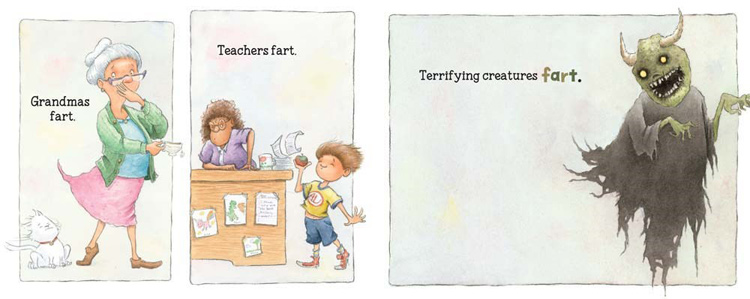
I think learning the words for farting (and making it funny when it happens) is really helpful for a few reasons. My first reason has nothing to do with potty training. Farting is a pretty basic part of social humor, and teaching your kid to appreciate a fart joke lets them in on common social situations with their peers. Secondly, farting often precedes... needing to poop! Being aware of when you need to poop is critical for potty training readiness and you can't teach someone to consider this possibility when they have a lot of gas unless they have a concept of farting and can label that it's happening.
There are probably too many synonyms for "fart" in this book for a child with a language delay. Although it does make some sense to try to expose a child to synonyms because people are so (weirdly) averse to using the word "fart." Preschool teachers have told me, for instance, that they are only "allowed" to say toot. The good news for kids who need less variation is that the majority of the book's text uses "fart" and the entire book is designed to help kids anticipate the meaning of any synonyms because of its strict parallel construction. What I mean by this is that each sentence reads "[THIS PERSON/CREATURE] farts [or synonym]" paired with imagery of someone/something farting. Still concerned? Don't fart around, shake your butt and blow a raspberry at the end of each sentence—you will not only help your child decode the meaning, but also delight them.
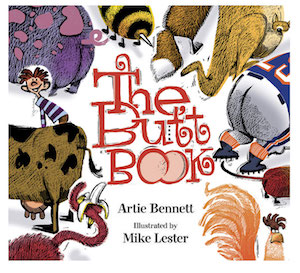
Bloomsbury USA Children's (2010); hardcover, $17.99

A child needs to be very aware of where their butt is located and the word(s) for it in order to succeed in potty training methods that rely on verbal instruction. Luke, my more speech delayed child, could not reliably tact his own butt, someone else's butt, or say the word "butt" until his late 3s.
The Butt Book is a well-constructed string of rhyming couplets that celebrates the butt and, quite helpfully for some kids, but quite confusingly for others, takes a tour through many of the synonyms people use to describe butts. This has the potential to be useful if say, your mother-in-law says tuchas, the preschool teachers say butt, and you can't help but say bum.
The watercolor and ink illustrations are happy and active, but somewhat visually noisy with lots of lines, which was unfortunate for Luke who is easily overstimulated that way and will shut down and refuse to look at the book (but he will still listen to it). Children who are reinforced by books with animals will have lots to interest them. My animal-obsessed son Harry loves the page with all the dog butts best.
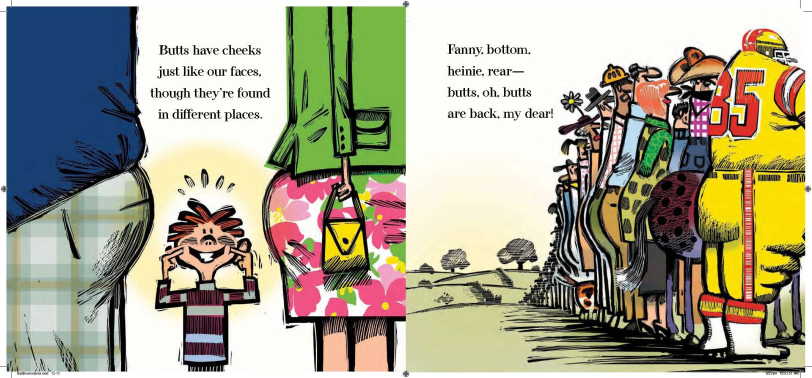
The prominence and focus of the various butts throughout the book are de facto funny. There are also lots of moments you can get your child moving (great for sensory integration) and connecting the book to their own butt. One page adorably commands: When dancing, you can shake your booty. Shake, shake, shake, you little cutie. If you can model that motor activity, and make a game out of it, you can prepare to confidently cross "can label their butt" off your child's potty training prerequisites list.
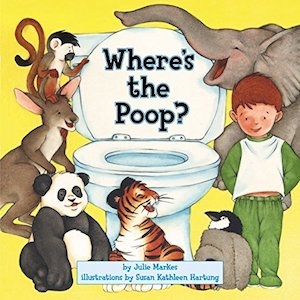
HarperFestival (2004); hardcover, $10.99

"Pee and poo go in the potty, honey," is something you are apt to find yourself repeating more than a few times when your child is potty training. Where's the Poop? is a book that is singularly focused on this question of where poop belongs, and it explores it in a fun way, by having kids look for the special place various animal youngsters have done their business.
Each two-page spread shows a different animal parent asking their offspring if they have pooped. The little elephant, monkey, kangaroo, panda bear, penguin, and tiger all have pooped, and they each answer yes in a way that is upbeat and positive. Three flaps provide different possible answers to the question (which you then pose to your child) "Where's the poop?" The poop is always under the third flap, so you can get into a rhythm of saying "No, not in the tree!" or "That would be a silly place to poop!" before you find the special place that this species of animal puts its poop.
Of course, the last spread is a human child who is very proud that he has pooped, and we check to make sure that he did so in the correct place: not under the towel on the floor, and not behind the bathroom mirror, but in the toilet! The boy's turd floats in the bowl for you to see and point to.
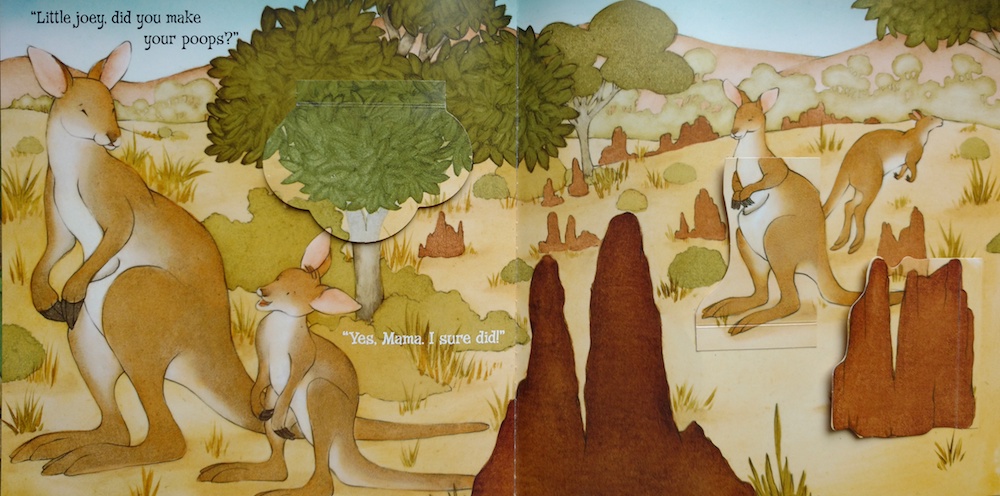
A year ago, I wouldn't have bought this book; the flaps are small and flimsy and tear easily, and I hate them. But now that my kids have better fine motor control and aren't as rough with books, I'm more willing to give books like this a try. YMMV.
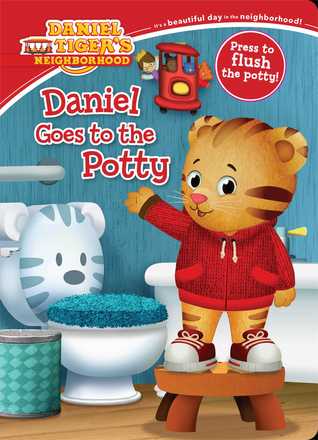
Simon Spotlight (2014); hardcover, $8.99

Most of you probably already know about Daniel Tiger's Neighborhood, the PBS television series aimed at the preschool demographic. If you don't know about it, it's worth checking out.
I don't review media tie-in books very often on this blog― but I should. Buying books that feature a favorite TV character or a well-loved movie are fabulous ways to encourage a child to read.
Daniel Goes to the Potty is one of my favorite toileting social story books. In it, Daniel learns that he can use the potty anywhere, not just in his home.
For a child with autism, generalizing a skill is often extremely difficult―that is transferring a skill mastered in one setting to other settings. Your child may be potty trained at home but not understand that there are bathrooms she can use outside of the home. The problem that this book addresses is a very important one.
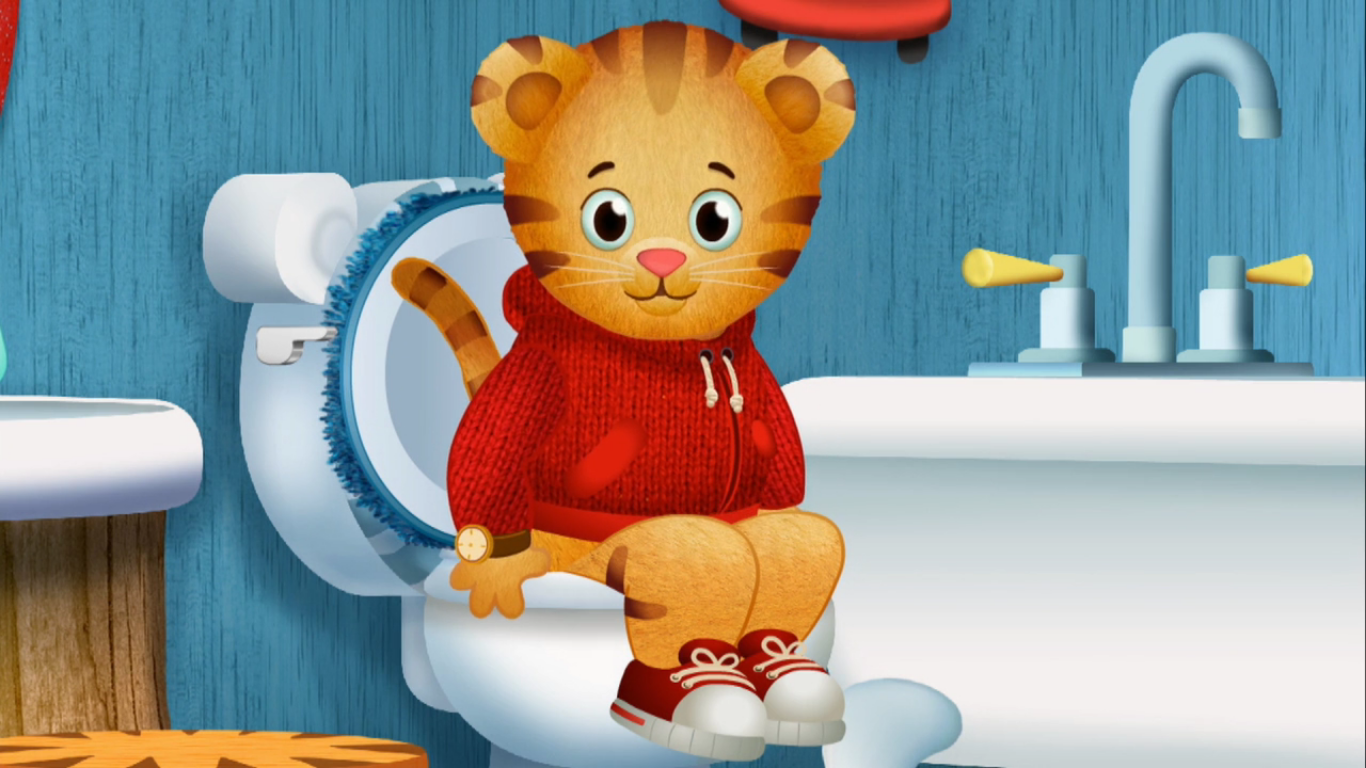
The book pairs perfectly with the second half of Season 2, Episode 1 of the Daniel Tiger cartoon series ("Daniel Tiger Goes to the Potty"), which you can watch with your child to help reinforce the fun of reading the book. Videos that are based on books (or vice versa) are extremely helpful ways of encouraging kids who have trouble attending to a book (but like screen time) to do so.
Watching the episode will also make it easy to learn the song about using the potty, and singing provides a nice sensory experience for kids. There's also a great big button you can push (how satisfying!) that makes the sound of a toilet flushing. Multi-sensory books are good for all children, but they particularly help kids with attention issues and sensory seeking issues to enjoy and attend to a book.
There are, however, some minor issues that I should point out. Daniel Tiger's animated character never wears pants, and it's odd to see him jump off and on the potty without donning or doffing anything. It didn't negatively impact my kids' sequencing skills in the bathroom, but it's worth thinking about. Also, if you live in a major urban setting (as I do) it's not true that you can use the bathroom anywhere as the book suggests. Manhattan grocery stores don't have public restrooms, for instance.
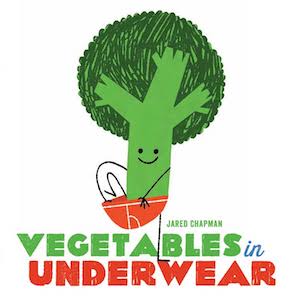
Harry N. Abrams (2015); board book, $7.95

The potty training-fantasy reward of shopping for fun underwear is unrealistic for most of our families. It's hard to sell underwear as a prize when it's so strongly associated with such hard work and its value is 100% abstract. And, generally speaking, shopping malls are not exactly favorite haunts for kids with ASD.
Anything we can do to create positive associations with underwear (and help kids learn the word for underwear and tact it) using books is helpful. Silly, colorful vegetable characters showing off their fun undies? Yes, please.
For a child who doesn't have a lot of attributes yet or who can't label many vegetables, there may be too much going on here. But many will enjoy labeling these elements. Opposite attributes structure the bulk of the book. Underwear can be big/little, dirty/clean, old/new, serious/funny, and for boys or girls. You can also have a different pair for every day of the week.
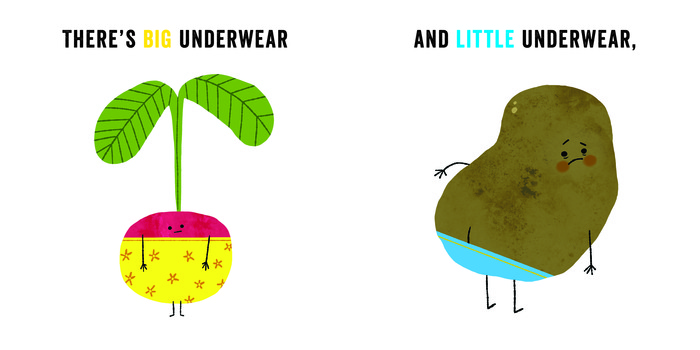
Some of the veggies are a bit hard to identify (corn and squash had me stumped for awhile). But the biggest negative is that the book has that problematic big kids/underwear vs babies/diapers framing. I let it slide for my kids because it occurs only briefly on one page and in a fairly benign way: The message is that babies can't wear underwear, and, well... that's true.
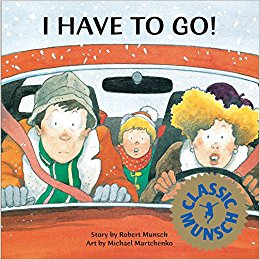
Annick Press (1987); paperback, $6.95

I Have to Go! is about a little boy named Andrew who is not yet the most reliable reporter about when he needs to pee.
When asked, "Andrew, do you have to go pee?" Andrew says, "No, no, no, no, no." Of course, at the most inconvenient moment, like when the family is driving in their car, Andrew will say: "I HAVE TO GO PEE!"
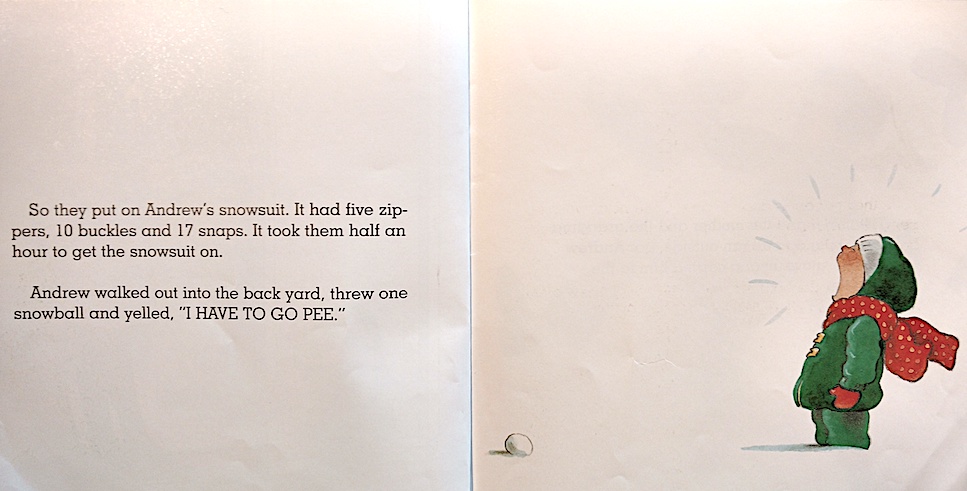
If you read this book aloud with a lot of energy and give the characters (there are perhaps too many) funny and distinct voices, this book is very funny. Munsch gives it a predictable structure and repeating lines, so it's easy for most kids to pick up. My son Harry loves to say the "No, no, no, no, no" part for Andrew.
This may work for some as a social story about the pitfalls of holding it (it did this for my son Harry), if that is something a child is struggling with. Towards the end, Andrew wets his bed, but it ends on a positive note when he finds a way to admit he has to go by asking his grandfather if he has to go pee.
Unlike some reviewers, I really appreciate the scene where Andrew pees behind a bush (on the car trip). This is true to life, and it's a good way to model flexibility. I also like that the book ends with an appropriately ambitious victory: Andrew didn't wet the bed again that night.
Some may be disappointed that I Have to Go never actually shows a bathroom. But I like that it's entirely focused on the skill of recognizing when you need to go, which doesn't usually occur in a bathroom.
One note of caution is that this is a somewhat wordy picture book. It may be too long for kids with shorter attention spans. My son Luke isn't the biggest fan.
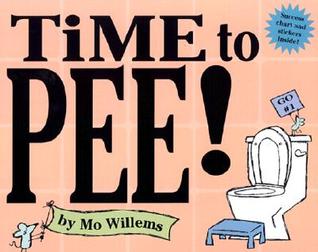
Disney-Hyperion (2003); hardcover, $16.99

From the author of Don't Let the Pigeon Drive the Bus and the Elephant & Piggie series, Time to Pee! is rife with classic Mo Willems wit.
A pack of mice carrying a little sign for each word in the text gives the story a sense of cheerleading. (It also makes each word stand out in a really great way that is ideal for sight word practice.) The plot is simple: a child gets "that funny feeling" and is admonished not to "panic, fret, or ignore it." The child goes into the bathroom and the sequence of pottying steps is gone over in a cheery, reassuring way.
The sequencing is perhaps a bit too specific. The lid does not always need to be lifted. And telling boys that they may stand to pee while girls should sit is confusing in that a lot of boys, particularly those with developmental disabilities (although not all, to be sure), learn to pee sitting down. The may is meant to cover this, but the gender segmenting is bound to cause some confusion.
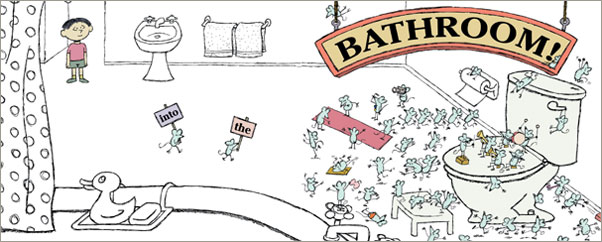
I really like that the phrase "Time to pee!" is the title. It works as a mand (something that a child can use as a script for when they need to ask for the bathroom). It's also really nice that the social story aspect of this deals with the very universal issue of not wanting to stop playing. The story doesn't end with the toilet flush, it ends with a child happily returning to their toys, which are exactly as she left them.
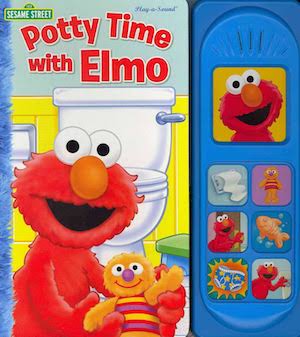
Phoenix International Publications, Inc. (2005); hardcover, out of print (new edition available)

Elmo teaches Baby David to use the potty in this 7-button sound book. I'm reviewing the edition I have, which is now out of print, but a very similar-looking new edition exists.
The book has buttons that make sound effects for toilet paper spinning, footsteps and opening the door to the bathroom, Elmo saying "Let's try to use the potty!", hand-washing sounds, Elmo saying "Hooray!", and a flushing sound. (The button images for each sound don't always make complete sense.)
Sound books with buttons are really great for children who have a hard time attending to books and need sensory input. If this is your situation, try to shape that interest. Point out the next sound button icon as you read, and praise your child when they push the right button.
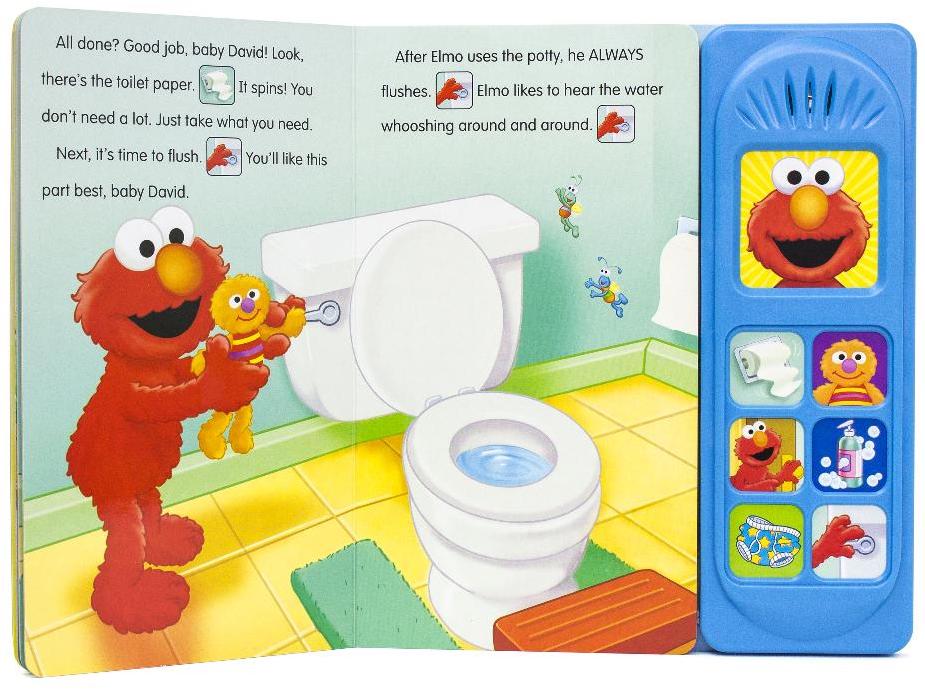
The writing isn't great, but for a book like this, the writing isn't the point. If you have an Elmo-loving child, a book like this can help drive interest in labeling parts of the bathroom and provide some good exposure to the sequencing of toileting steps. It also pairs well with the many potty training videos, apps, toys, and other merchandise Sesame Workshop sells starring Elmo.
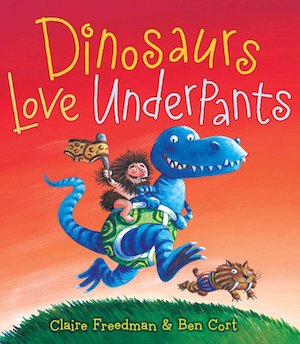
Simon & Schuster (2008); hardcover, $16.99

Why are dinosaurs extinct? Turns out it's because they all killed each other over underpants!
With this silly premise, a colorful and active tale unfolds using rhyme and rhythm to carry kids along for the ride. The aim is simple: make underpants cool. There's no connection made between wearing underwear and using the potty, and that's okay. The focus on underwear is the whole point.
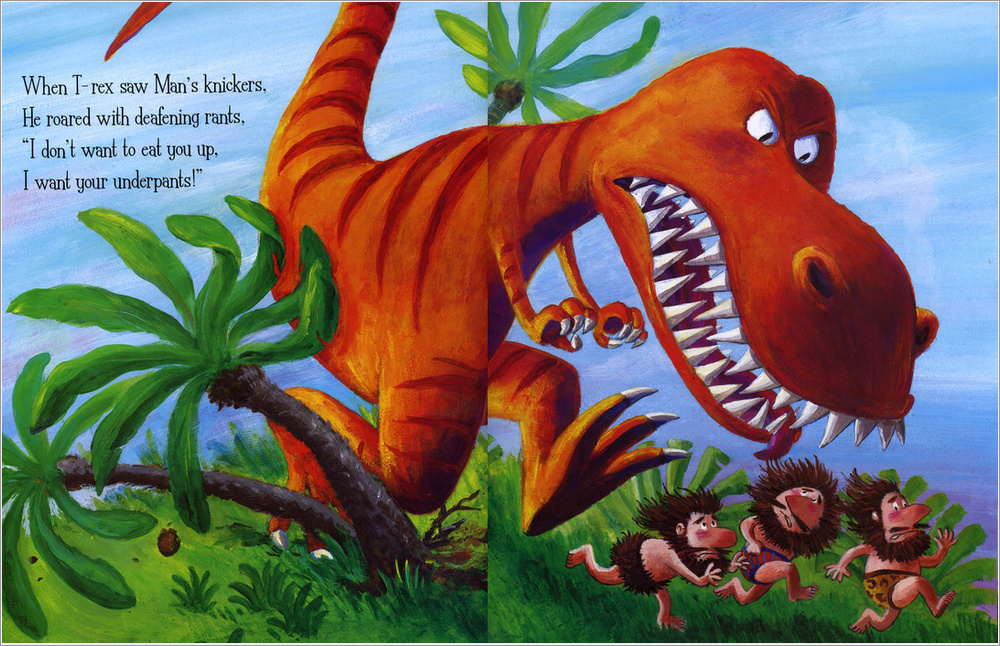
There are some things about this book that are a miss. Many of the writing choices are odd—and I'm not talking about the fossil record stuff or the lack of female cavemen. For example, why include an explanation of why cavemen started wearing underwear ("to stop them from looking crude")? It's confusing.
Some reviewers are horrified by the dino-on-dino violence and the depiction of two dead dinosaurs in the final pages. This doesn't bother me, personally, but for some it may be a deal breaker. The dino action is what makes it fun for kids, and there's nothing gruesome. The illustrations are colorful and engaging, and the spin on underwear as cool and somehow associated with fearsome, warring dinosaurs is unexpectedly successful.